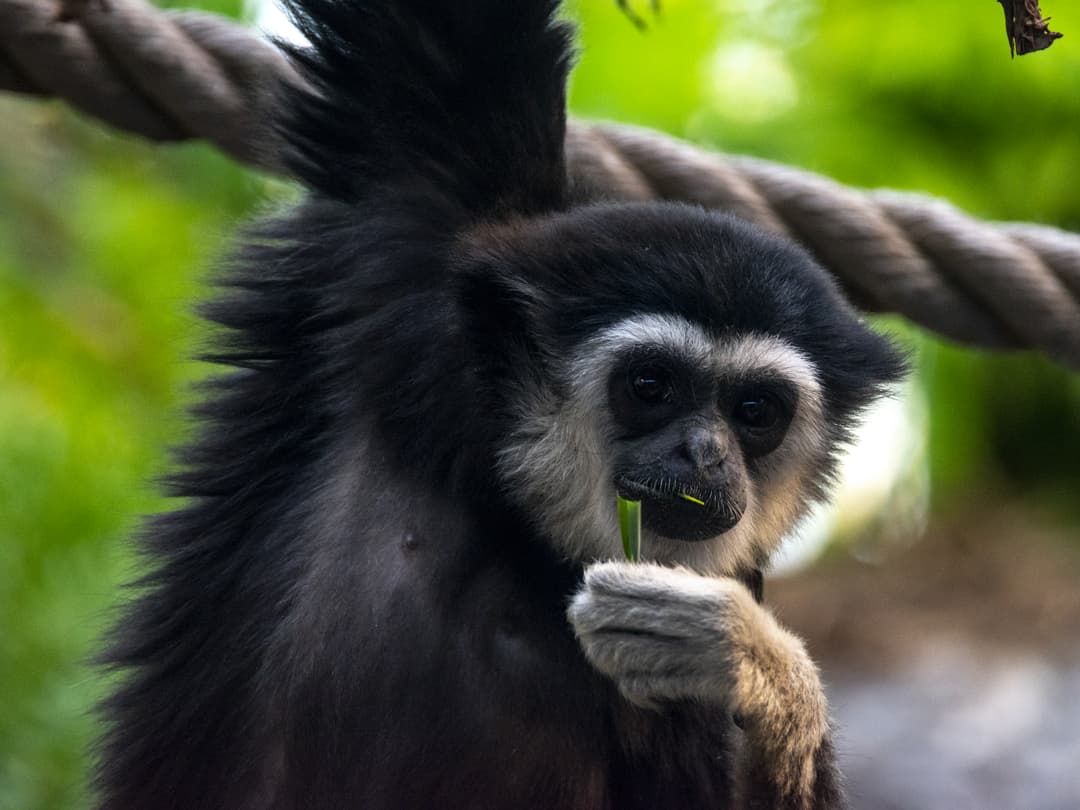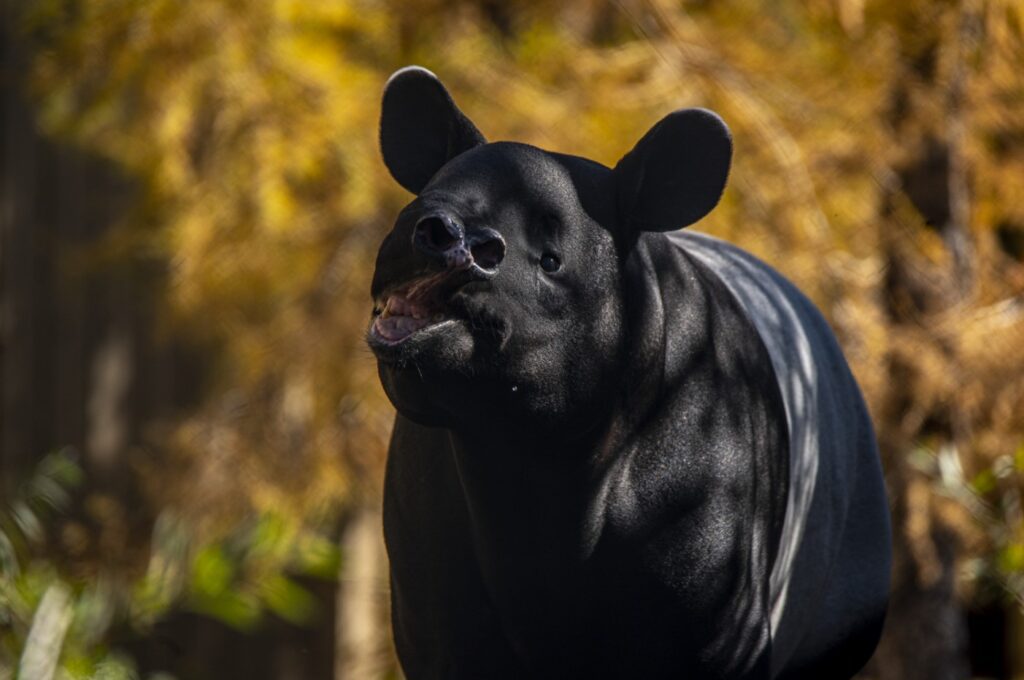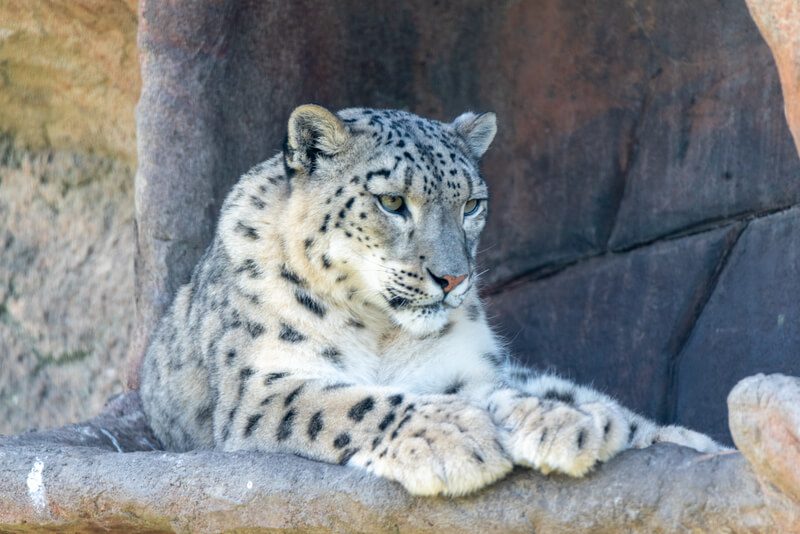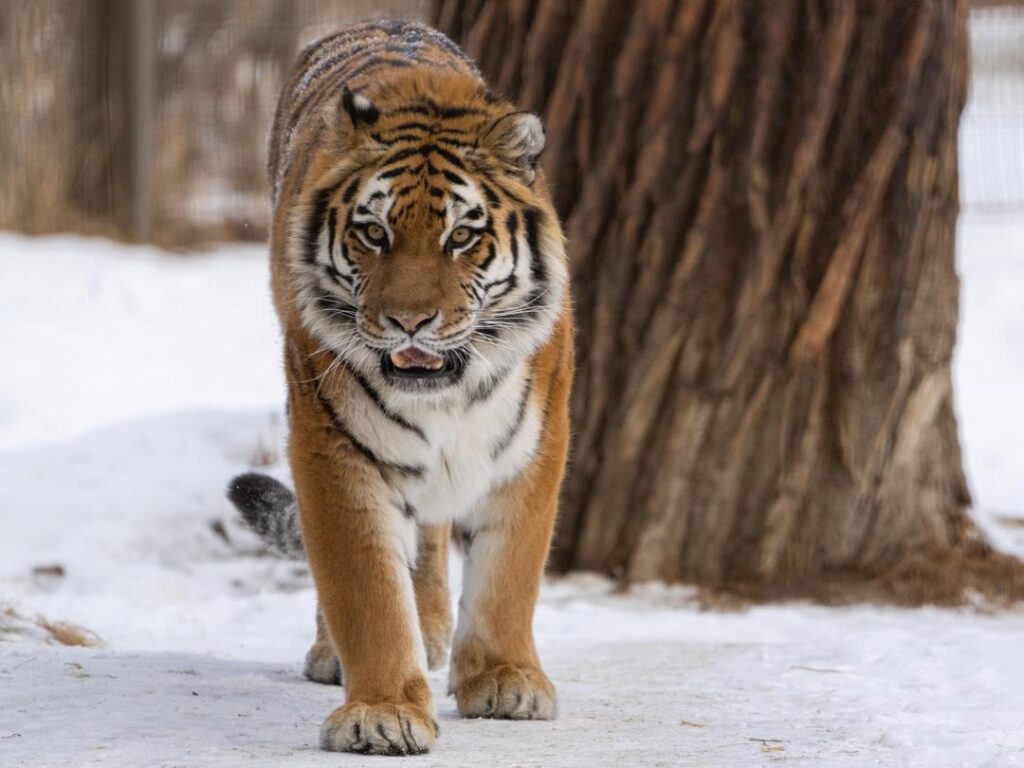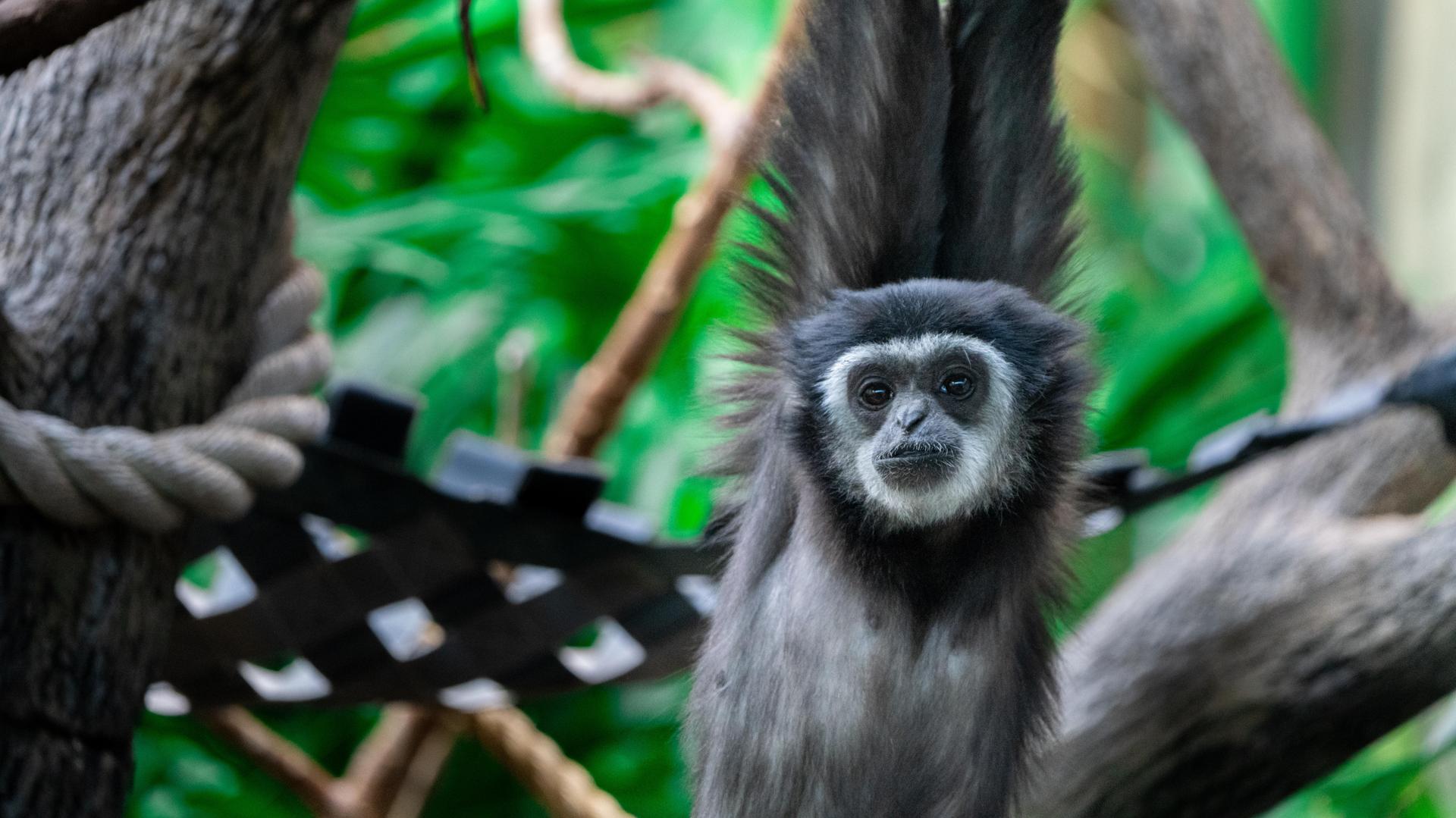
White-Handed Gibbons
Meet the fastest of all primates
White-handed gibbons move so quickly through their forest home that they practically fly, easily swinging 10 meters or more at speeds up to 56 kilometres per hour. In addition to their arms spanning 1.5 metres, white-handed gibbons have opposable thumbs and long, curved fingers that act as hooks, making it easy for them to swing hand over hand, or “brachiate”, between trees. Gibbons are largely frugivorous, and while they can be picky about which fruits they eat, their adaptations make finding food easy.
- IUCN Red List Status: Endangered (at very high risk of extinction in the wild)
- Type: Mammal
- Habitat: Tropical forests of southeast Asia
- Diet: Omnivore – fruits, leaves, and insects
- Size: 43 to 6.3 centimetres
- Weight: 4.5 to 7.7 kilograms
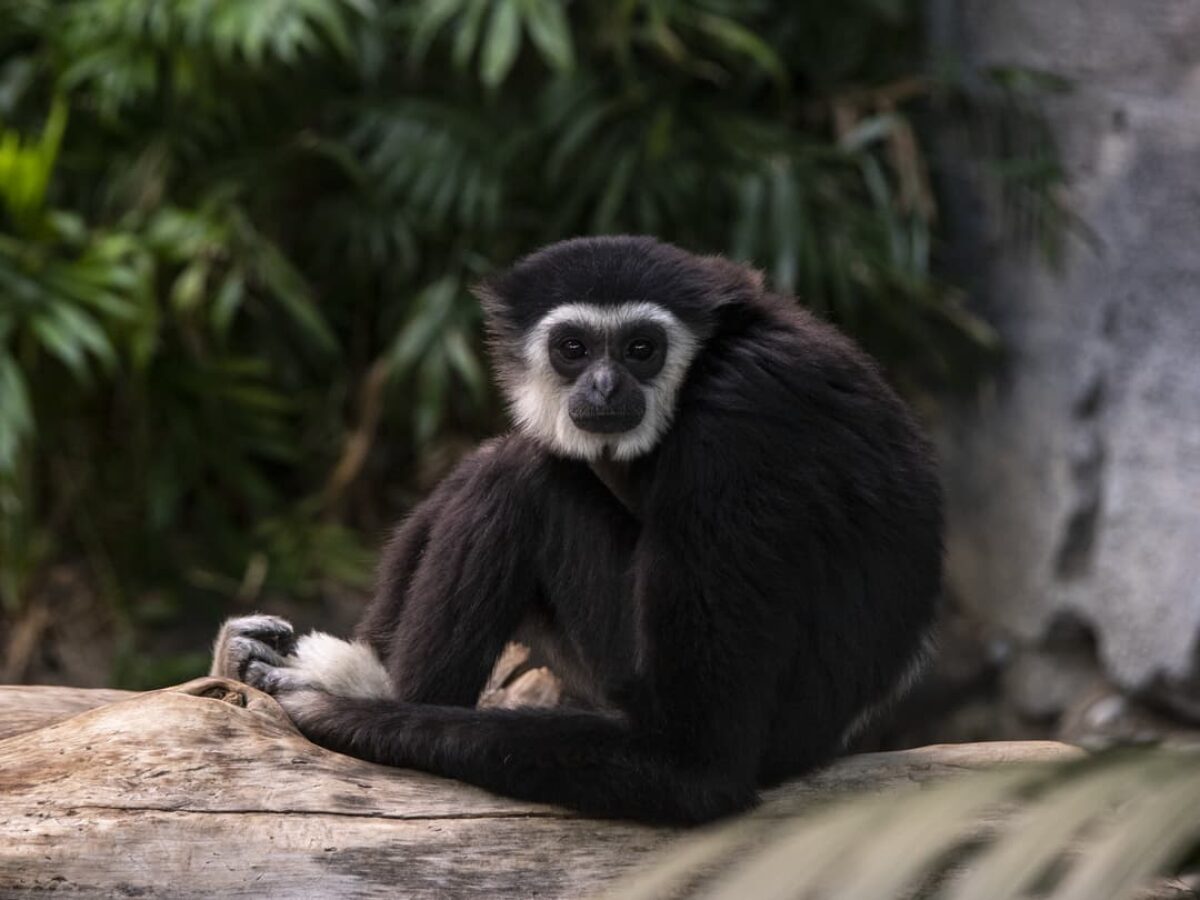
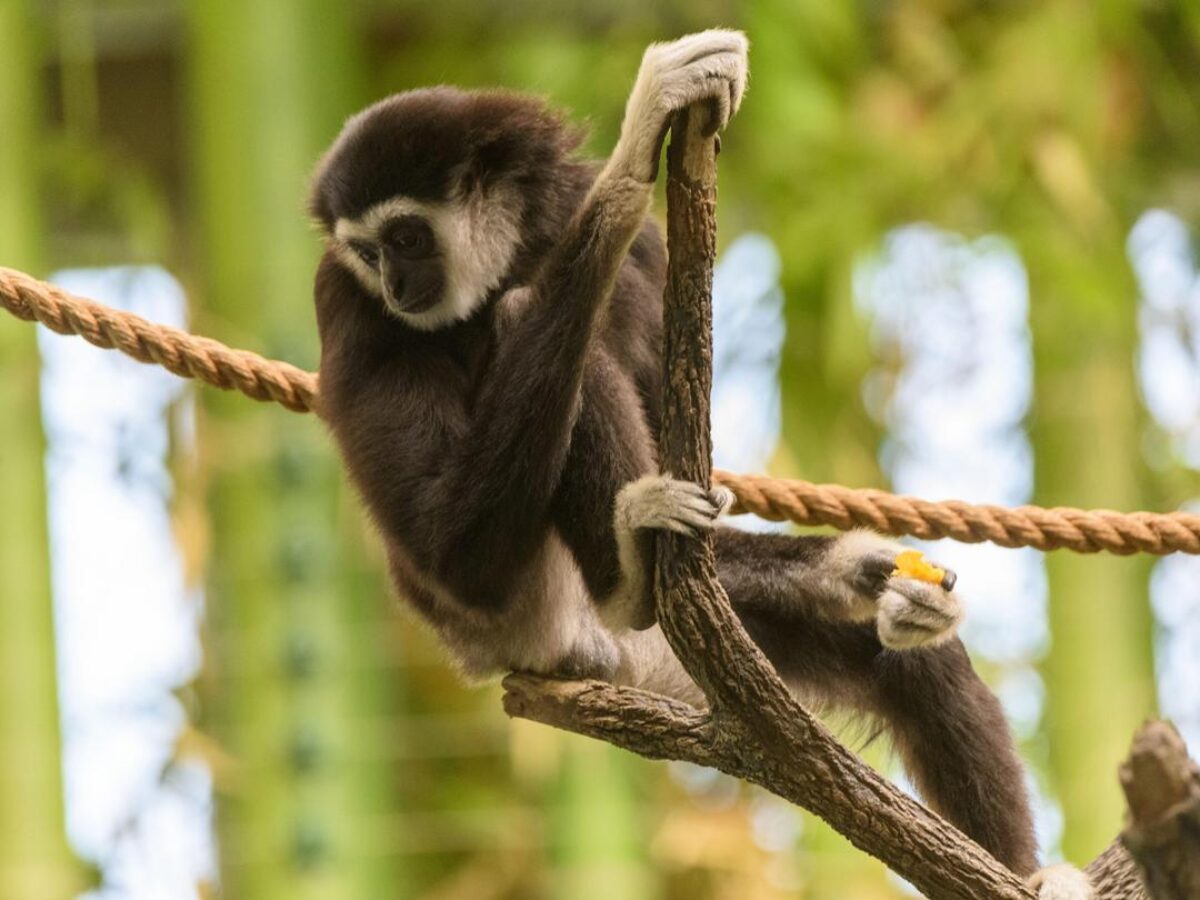
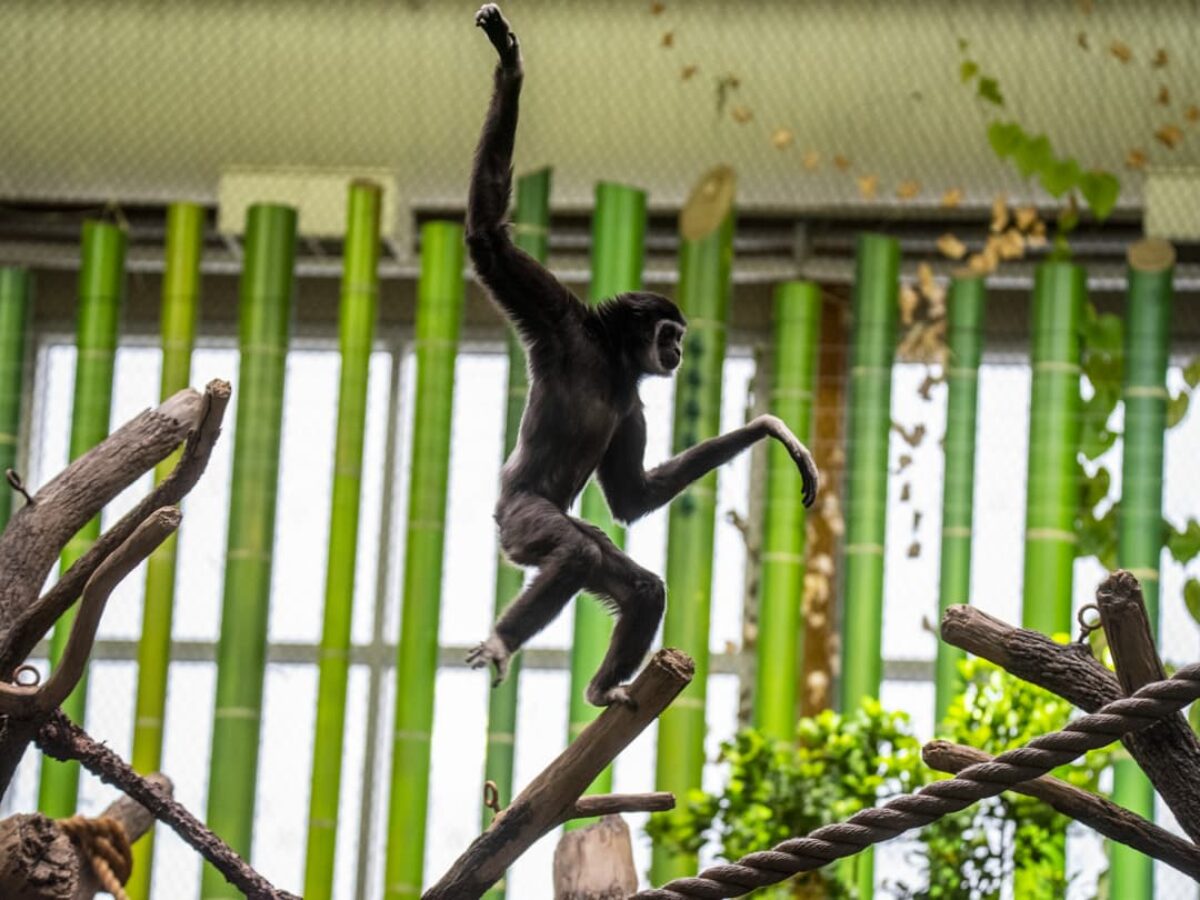
Facts about our animals
Fun Facts about White-Handed Gibbons
When they sleep, gibbons rest their heads between their knees and chests.
Their arms are approximately one and a half times longer than their legs.
Gibbons have a saddle joint in their wrists, which give them extra flexibility.
Gibbons are bipedal, and if walking on the ground or across tree limbs on two feet, will hold their long arms up for balance.
Gibbons drink by dipping their hands into water, or by licking their fur after purposely rubbing in wet leaves, or after a rainstorm.
White-handed gibbons communicate through intricate songs which can be heard up to a kilometre away.
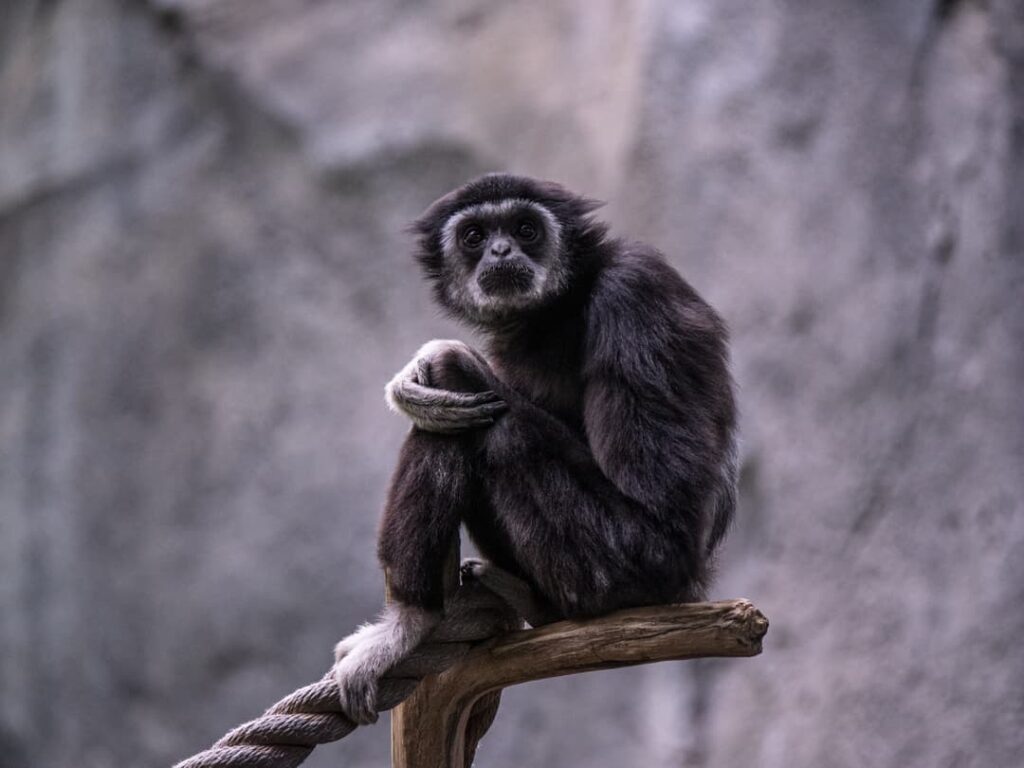
Donate
How you can help
Your donation makes a world of difference. With support for animal care, conservation programs, and education, you’re making the world wilder.
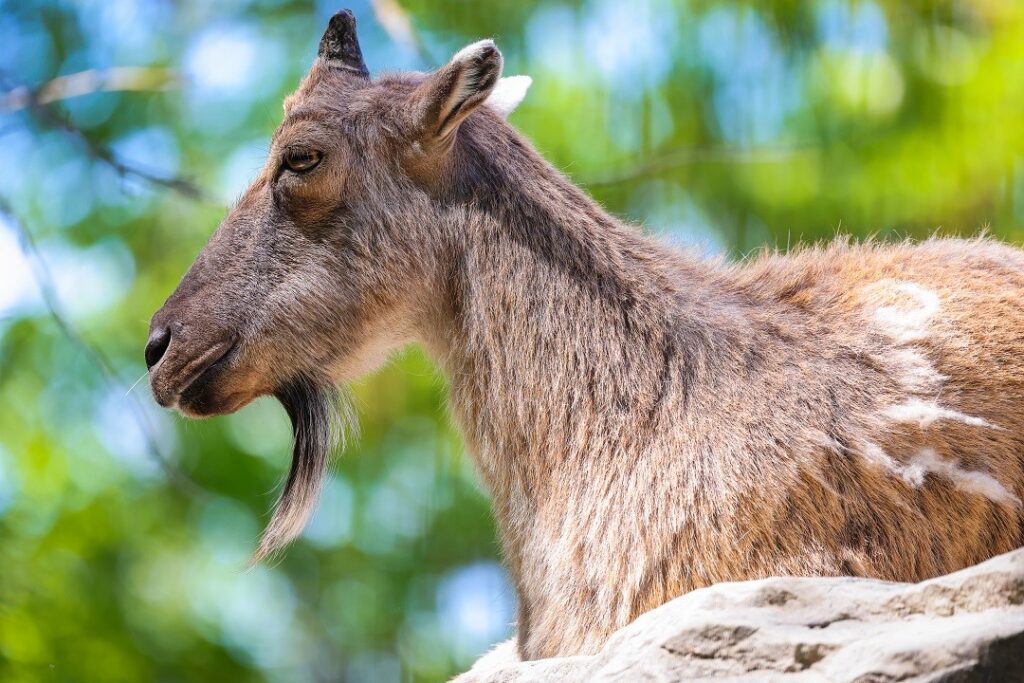
Plan Your Visit
Get close to wildlife
It’s time to make some memories. Here’s everything you need to know to plan an unforgettable day at the zoo.

